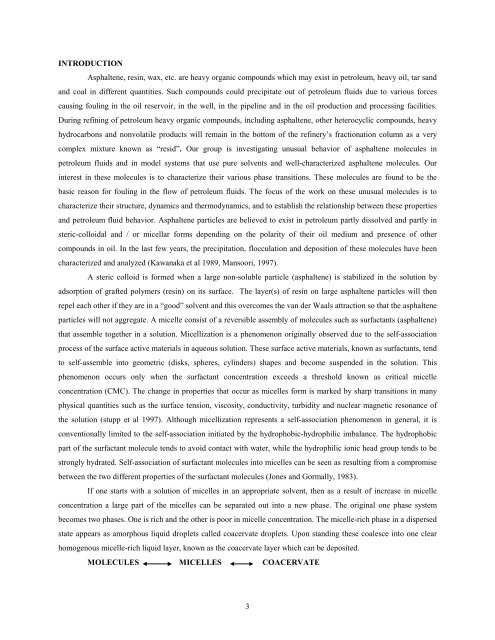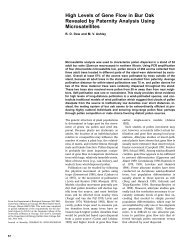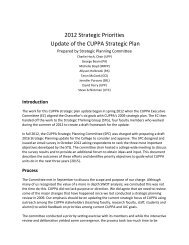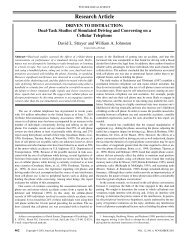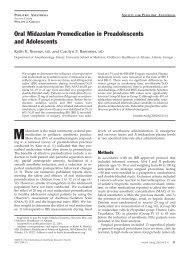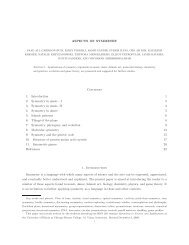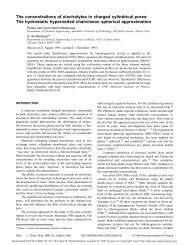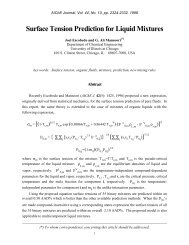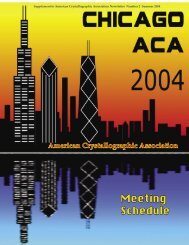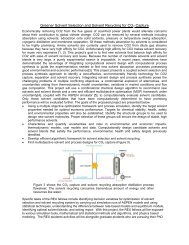Structure & Properties of Micelles and Micelle Coacervates of ...
Structure & Properties of Micelles and Micelle Coacervates of ...
Structure & Properties of Micelles and Micelle Coacervates of ...
You also want an ePaper? Increase the reach of your titles
YUMPU automatically turns print PDFs into web optimized ePapers that Google loves.
INTRODUCTION<br />
Asphaltene, resin, wax, etc. are heavy organic compounds which may exist in petroleum, heavy oil, tar s<strong>and</strong><br />
<strong>and</strong> coal in different quantities. Such compounds could precipitate out <strong>of</strong> petroleum fluids due to various forces<br />
causing fouling in the oil reservoir, in the well, in the pipeline <strong>and</strong> in the oil production <strong>and</strong> processing facilities.<br />
During refining <strong>of</strong> petroleum heavy organic compounds, including asphaltene, other heterocyclic compounds, heavy<br />
hydrocarbons <strong>and</strong> nonvolatile products will remain in the bottom <strong>of</strong> the refinery’s fractionation column as a very<br />
complex mixture known as “resid”. Our group is investigating unusual behavior <strong>of</strong> asphaltene molecules in<br />
petroleum fluids <strong>and</strong> in model systems that use pure solvents <strong>and</strong> well-characterized asphaltene molecules. Our<br />
interest in these molecules is to characterize their various phase transitions. These molecules are found to be the<br />
basic reason for fouling in the flow <strong>of</strong> petroleum fluids. The focus <strong>of</strong> the work on these unusual molecules is to<br />
characterize their structure, dynamics <strong>and</strong> thermodynamics, <strong>and</strong> to establish the relationship between these properties<br />
<strong>and</strong> petroleum fluid behavior. Asphaltene particles are believed to exist in petroleum partly dissolved <strong>and</strong> partly in<br />
steric-colloidal <strong>and</strong> / or micellar forms depending on the polarity <strong>of</strong> their oil medium <strong>and</strong> presence <strong>of</strong> other<br />
compounds in oil. In the last few years, the precipitation, flocculation <strong>and</strong> deposition <strong>of</strong> these molecules have been<br />
characterized <strong>and</strong> analyzed (Kawanaka et al 1989, Mansoori, 1997).<br />
A steric colloid is formed when a large non-soluble particle (asphaltene) is stabilized in the solution by<br />
adsorption <strong>of</strong> grafted polymers (resin) on its surface. The layer(s) <strong>of</strong> resin on large asphaltene particles will then<br />
repel each other if they are in a “good” solvent <strong>and</strong> this overcomes the van der Waals attraction so that the asphaltene<br />
particles will not aggregate. A micelle consist <strong>of</strong> a reversible assembly <strong>of</strong> molecules such as surfactants (asphaltene)<br />
that assemble together in a solution. Micellization is a phenomenon originally observed due to the self-association<br />
process <strong>of</strong> the surface active materials in aqueous solution. These surface active materials, known as surfactants, tend<br />
to self-assemble into geometric (disks, spheres, cylinders) shapes <strong>and</strong> become suspended in the solution. This<br />
phenomenon occurs only when the surfactant concentration exceeds a threshold known as critical micelle<br />
concentration (CMC). The change in properties that occur as micelles form is marked by sharp transitions in many<br />
physical quantities such as the surface tension, viscosity, conductivity, turbidity <strong>and</strong> nuclear magnetic resonance <strong>of</strong><br />
the solution (stupp et al 1997). Although micellization represents a self-association phenomenon in general, it is<br />
conventionally limited to the self-association initiated by the hydrophobic-hydrophilic imbalance. The hydrophobic<br />
part <strong>of</strong> the surfactant molecule tends to avoid contact with water, while the hydrophilic ionic head group tends to be<br />
strongly hydrated. Self-association <strong>of</strong> surfactant molecules into micelles can be seen as resulting from a compromise<br />
between the two different properties <strong>of</strong> the surfactant molecules (Jones <strong>and</strong> Gormally, 1983).<br />
If one starts with a solution <strong>of</strong> micelles in an appropriate solvent, then as a result <strong>of</strong> increase in micelle<br />
concentration a large part <strong>of</strong> the micelles can be separated out into a new phase. The original one phase system<br />
becomes two phases. One is rich <strong>and</strong> the other is poor in micelle concentration. The micelle-rich phase in a dispersed<br />
state appears as amorphous liquid droplets called coacervate droplets. Upon st<strong>and</strong>ing these coalesce into one clear<br />
homogenous micelle-rich liquid layer, known as the coacervate layer which can be deposited.<br />
MOLECULES MICELLES COACERVATE<br />
3


